Members of the Karagumi group
12:00 JST, May 24, 2024
The iconic red tent theater vibrates with excitement as the actors jump around the stage inside. The dialogue they conduct during their performance is lively, full of humor and lyricism – it is the work of the late playwright, director and actor Juro Kara. And now a younger generation of actors is enlivening the theater group he founded with a new wave of energy.
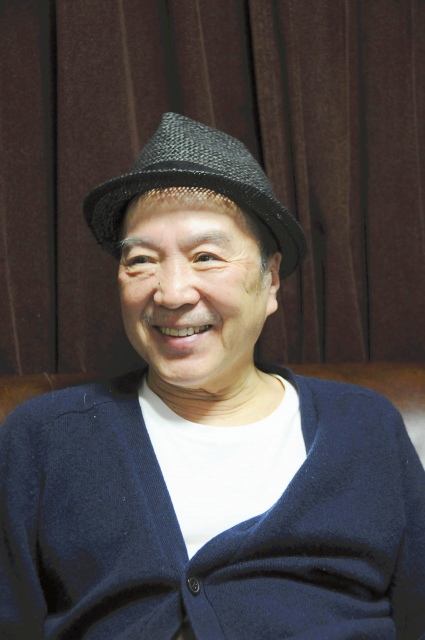
Juro Kara
The group, called the Karagumi (Kara Group), is known for its unconventional approach: the actors do all the preparations for stage productions themselves, including setting up a mobile red tent at each location, and they insist on going ahead with performance, regardless of wind, rain or anything else that may get in the way. The group is currently performing a long-awaited revival of the play “Doro Ningyo” (Muddy Mermaid), one of Kara’s masterpieces.
On May 4, the day before ‘Doro Ningyo’ opened in Tokyo, Kara died of an acute subdural hematoma in a hospital in the capital. He was 84.
Kara, who led the Karagumi until his death, first came to prominence as the leader of the group Jokyo Gekijo (Situation Theater) and became a major figure in the underground or “little theater” movement during the Showa era ( 1926-1989). alongside greats like Shuji Terayama, another well-known poet and playwright.
In 1967 he set up his red tent theater for the first time. The theater, made from a single sheet on the grounds of the Hanazono Shrine in Shinjuku Ward, Tokyo, provided a dramatic space shielded from the city noise. After the Jokyo Gekijo was disbanded, the work was taken over by the Karagumi, which Kara founded in 1989.
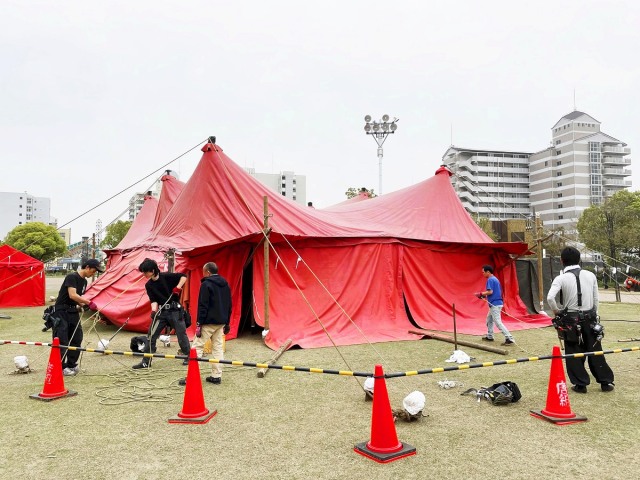
Karagumi’s mobile red tent theater set up in Minatogawa Park in Kobe
The play “Doro Ningyo” originally premiered in 2003. It is about the controversial land reclamation project of Isahaya Bay in Nagasaki Prefecture, and depicts a tinplate production shop in a remote corner of a major city connected to a fishing community along Isahaya Bay.
Kara visited the Isahaya Bay area for research before writing the script, which was critically acclaimed and won awards including the Yomiuri Literature Prize for drama.
At the time of the land reclamation project, shocking images were shown in the news media of the bay divided by a dike consisting of a row of steel plates that fell into place like guillotine blades. These plates would be represented in the piece by a row of tin sheets. In a much-discussed scene, Kara jumped into a water tank that represented the muddy sea surrounding the mudflats.
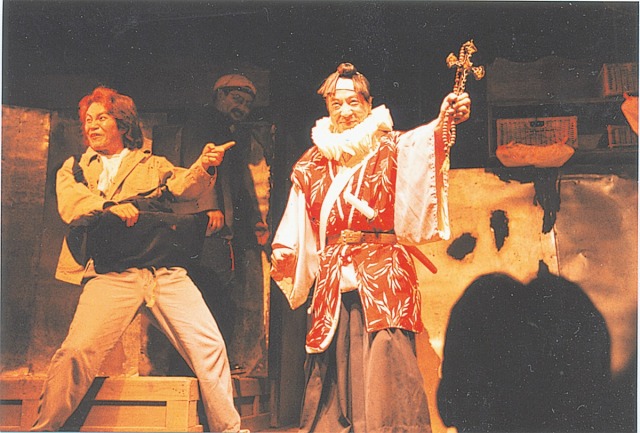
A scene from the first performance of “Doro Ningyo” in 2003
The current production of the play marks the first time it has been performed by the Karagumi in 21 years. Young actors have been selected for the production, who form a cast that symbolizes a ‘new era of Karagumi’.
The following material is based on interviews with Karagumi’s actors and staff, conducted by The Yomiuri Shimbun before Kara died.
Kara’s magic words
When I visited the group’s practice room in the Suginami Ward, Tokyo, in early April, I felt as if I had walked into the Showa era: I saw tin plate-making tools and props such as an old-fashioned hot water bottle placed next to me . next to each other.
The story concerns a former fisherman named Keiichi, who lives in a tin shop in a big city after leaving a seaside town whose inhabitants were divided by a ‘guillotine’ dike like the one in Isahaya. Yuki Fukumoto, 30, plays the lead role, which was first played by Takuo Inari, one of Karagumi’s star actors.
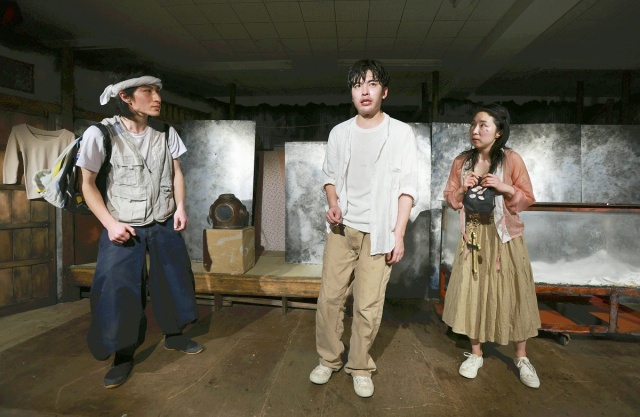
Actors rehearse in front of a handmade decor that represents a dike made of steel plates.
Fukumoto wanted to become an actor and he talked about it with his high school teacher, who was also a guidance counselor. He then attended Nihon University College of Art, where he met Kara’s son Sasuke Otsuru, who was also a student at the university. He took Fukumoto to a performance of “Hitode” (Starfish) in the spring of 2012. Unfortunately, Kara suffered a serious injury during the show’s run and never returned to the stage.
“I didn’t understand the meaning of the story at all, but the performance made me feel the passion,” Fukumoto said. “At the end, [the back of the stage] suddenly opened, which gave me goosebumps. I admired Inari and decided to become an actor like him.”
Fukumoto is not currently a member of the Karagumi, so he is starring as a guest actor, as he did in the group’s previous outing.
He says that as an outsider, he recognizes that the company’s charm is “the magic of Kara’s words,” which are poetic and endlessly stimulate the imagination.
“As long as there is a connection [to the role] in me the words will come from my core,” he said. “I’m sometimes surprised by how fast I can talk. It’s like Kara has me on a fishing line that he’s pulling and spinning.”
Too moved not to participate
Minion Otsuru, 32, who acts as Yasumi, the heroine who follows Keiichi out of the seaside resort, is Kara’s daughter. Otsuru first saw her father perform when she was 5 years old.
“’Doro Ningyo’ is one that really sticks in my memory,” she said. “When Yuki Fujii played Yasumi, she played her as an unconventional heroine. I thought [my father] wrote the role with a different perspective on the world.”
Otsuru is not good at public speaking and she never dreamed of acting in her father’s performances. When she was 17 years old, she saw a filmed performance of ‘Jaguar no Me’ (The Jaguar’s Eye), a 1985 play that Kara dedicated to Shuji Terayama, and was so moved that she asked her father to show her the red tent take. phase.
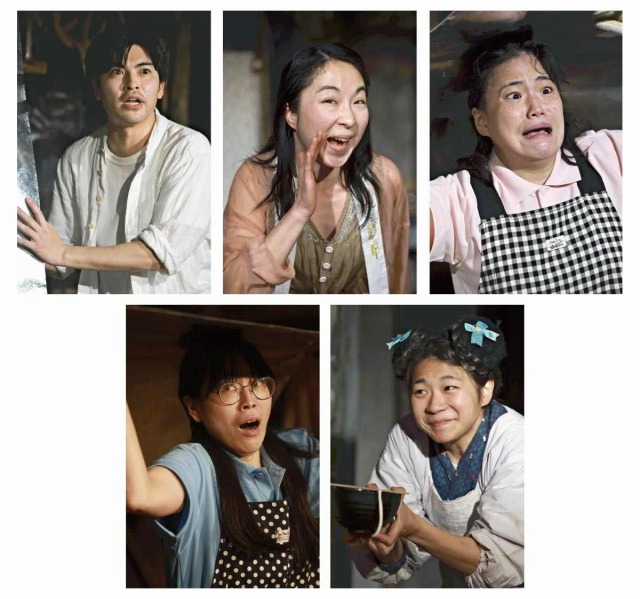
Clockwise from top left: Yuki Fukumoto, Minion Otsuru, Yukari Fukuhara, Ai Masuda and Nona Kato
Once she did, she discovered it was a world where the audience freely shouted “Kara!” called out. and other things for the actors, while sweat and water from the stage splash the tightly packed crowd onto their straw mats.
“It’s like playing a game with the audience. It’s always a lot of fun,” Otsuru said.
She worked as a freelance actress for a while, but when she heard that a 20-year-old woman had joined the Karagumi, she thought, “It’s time for me to get serious.” So after their performance of ‘Jaguar no me’ in 2019, she became a member of the group.
Powerful actresses
One of the strengths of the Karagumi are the actresses, who are active both on stage and behind the scenes.
Yukari Fukuhara, 34, who really excels at playing eccentric characters, worked for a theater production company after graduating from Nihon University College of Art. “I made a lot of money and wasn’t that busy, but I didn’t find it exciting,” she remembers.
Then she remembered a performance she saw in the red tent theater when she was in college. She learned the group was recruiting when she saw a sign that read, “If you have passion, knock on our door.” She then took their test and joined the group in 2016.
“Reading Kara’s scripts feels like eating freshly cooked rice, even though they were written years ago,” Fukuhara said. “They always contain elements that are relevant to what is happening today.”
Nona Kato, 43, who also works as an assistant director and is responsible for costumes in addition to acting, came to Tokyo from Gifu Prefecture at the age of 27 to become an actress. After studying at a drama school for a year, she founded a theater company with friends and said, “There are no good plays, so let’s do our own.”
The first Karagumi play she saw was “Yuzaka Doji” (Boy on the Hill at Sunset) in the spring of 2008, in which Kara appeared on stage with a dog artwork on his back.
She thought, “I didn’t understand the story, but at the end I cried. Why? The only way to discover the secret is to participate in the creative process.” She joined the group in 2017. In February last year, she also got the opportunity to direct a performance of “Akai Kutsu” (Red Shoes) by young actors.
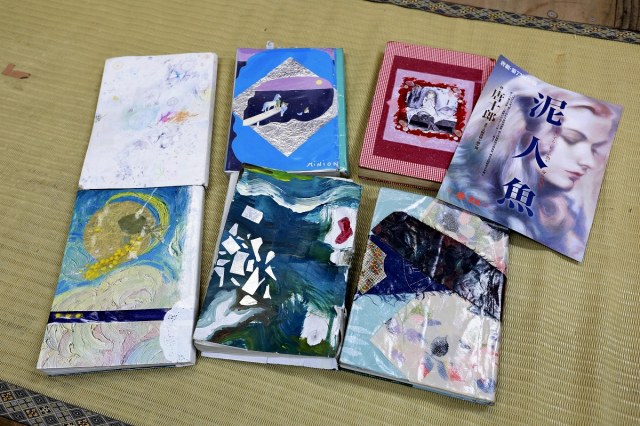
Group members added covers of their own designs to their respective scripts.
Ai Masuda, 25, joined the group in 2019. She has done an excellent job of portraying distinctive characters, such as a waitress pouring coffee from her ear holes in a performance of “Itojoro” (Thread prostitute) last fall.
While studying theater productions at a vocational school, she heard that an older classmate would be assisting in a performance of Kara’s “Yunicon Monogatari” (Unicorn Story) by the Shinjuku Ryozanpaku theater company, so she went to see it. She was blown away. After the experience, she wanted to join Karagumi even though she had never seen them perform, so she took their work test and came on board.
About the scripts written by Kara, Masuda said: “His ideas are great. I’m always amazed that he wrote these things purely from his imagination.”
She also said: “I want to do more performances in different areas, and eventually even abroad.”
The group will perform “Doro Ningyo” at Fureai Hiroba Square in Joyama Park in Nagano through June 16; the Kishimojin Temple in Zoshigaya, Tokyo; and Hanazono Shrine in Shinjuku, Tokyo.



